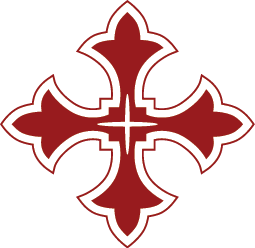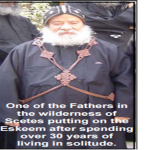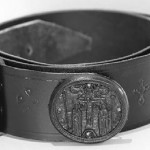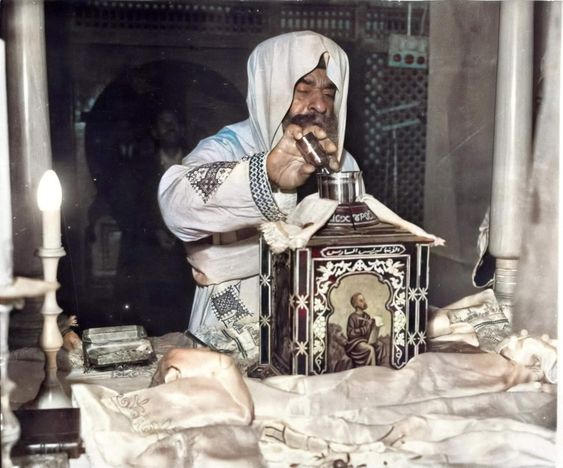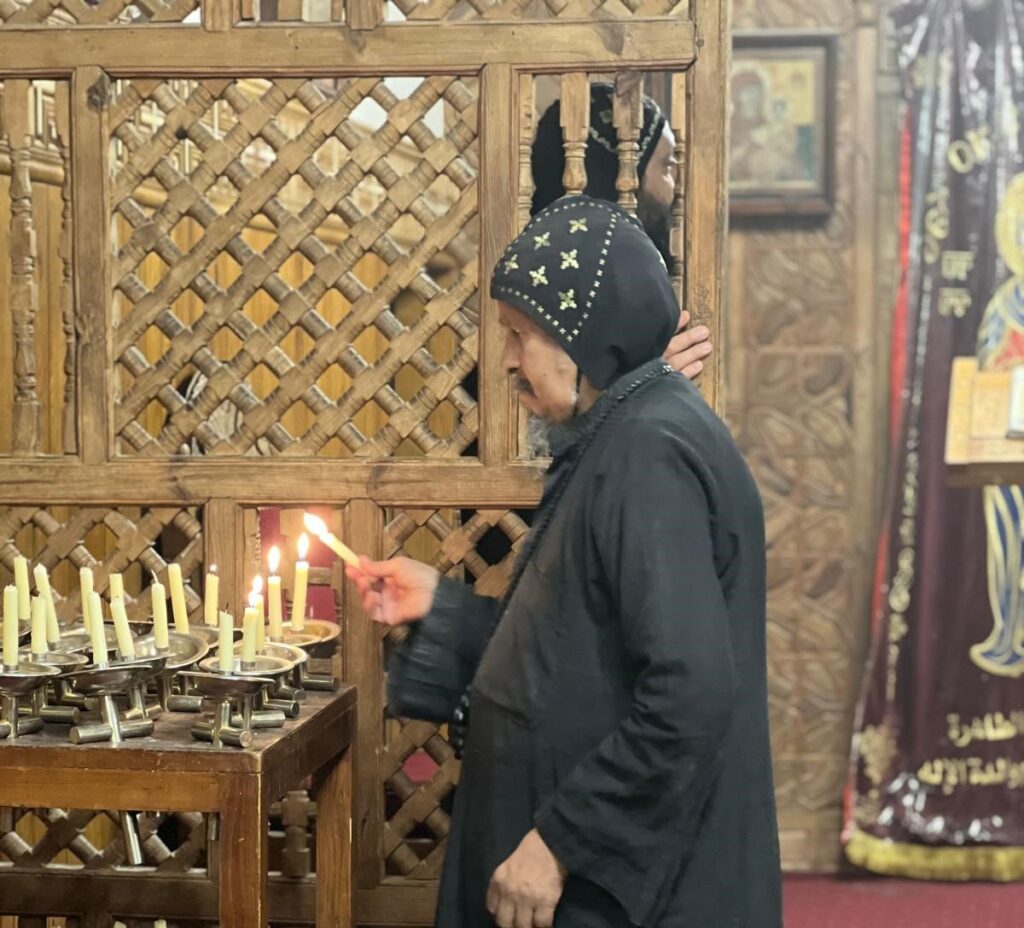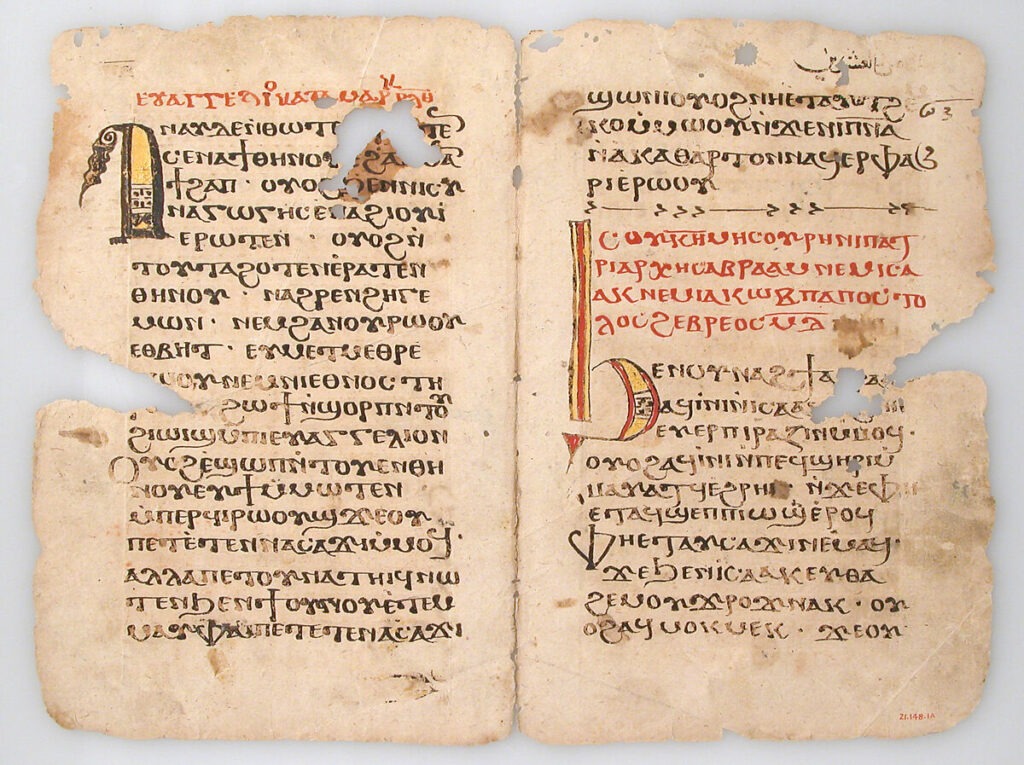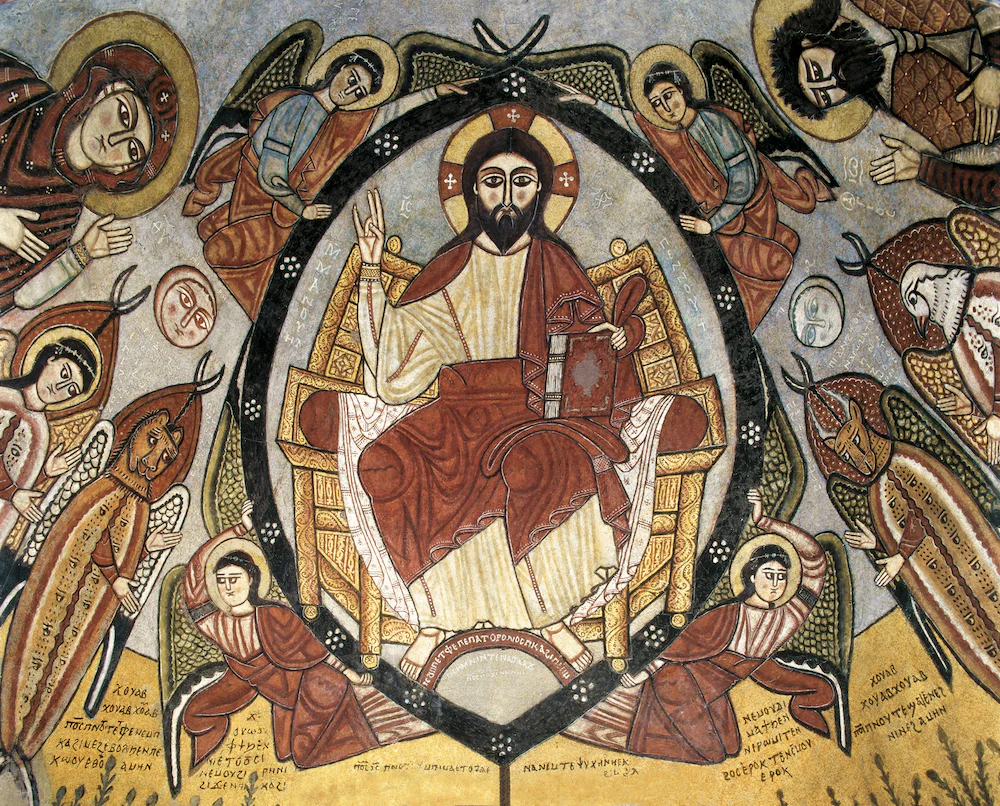When a person sees a monk, they immediately notice that he is wearing a monastic hood embroidered with crosses and with a split down the middle. The monastic hood or cowl, along with other pieces of clothing formed the monastic habit which Evagrius Ponticus outlines in his work The Praktikos. Evagrius writes “….an explanation of …
When a person sees a monk, they immediately notice that he is wearing a monastic hood embroidered with crosses and with a split down the middle. The monastic hood or cowl, along with other pieces of clothing formed the monastic habit which Evagrius Ponticus outlines in his work The Praktikos. Evagrius writes “….an explanation of the symbolism of the habit of the monks who live in Egypt.. not without purpose is this habit made in a form so very different from what other men employ for the style of their clothes.” . He then mentions the components of the monastic habit: the Cowl, scapular which has the form of a cross, the belt and staff. It is important to note that the monastic habit had some variations across Egypt in the early monastic period. Nowadays the monastic habit consists of the cowl, belt and tunic. Some monks, although rare, also where the ‘Eskeem’ or Schema. Regarding the cowl, Evagrius explains that it is “ a symbol of the charity of God our Savior. It protects the most important part of the body and keeps us, who are children in Christ, warm”. John Cassian in his work Institutes also mentions the cowl, “For they constantly use both by day and by night very small hoods coming down to the end of the neck and shoulders, which only cover the head, in order that they may constantly be moved to preserve the simplicity and innocence of little children by imitating their actual dress.”. Interestingly, an artifact from the 11th century shows the clothing of a child, and attached to the collar is what looks very similar to the current monastic hood, with a split down the middle however, without crosses.
In the Apophthegmata Patrum (Sayings of the Desert Fathers) there are occasions which mention the hood, such as “ Abba Zacharias drew his hood off his head , put it under his feet , and trampled on it. Then he said to Abba Moses “ If one does not allow others to treat him in this way, then he cannot become a monk” . There are also many icons In Egypt which depict monastic fathers wearing hoods. The famous 13th Century fresco’s in the Monastery of St Anthony in the Red Sea depict many of the desert fathers wearing hoods, so do the fresco’s in the monastery of St Paula in the Red Sea. However, it is important to note that the hoods in those artworks are slightly different to the current monastic hood, since some do not have crosses and some cover the ears whilst others do not.
Icons in the latter half of the 2nd millennium have a closer resemblance to the current hood, such as the icon of St Pachomious in Haret Al’Rum Cairo which depicts the Holy Father wearing a cowl with many crosses but with no split down the middle. An Icon of St Macarius in his monastery in Wadi El Natrun also shows the saint wearing a black hood with many crosses but also with no split in down the middle.
Thus it is evident that the monastic cowl is an ancient component of the monastic habit present from the early days of Egyptian Monasticism. Before the era of Pope Shenouda the third, the monastic hood was only a skull cap ( a beanie which sits above the ear) and a long piece of black cloth (about a couple of inches wide) which sits under the skull cap, and extends into their tunic forming a cross when it reaches the belt. This image can be seen in photos of contemporary saints such as Pope Cyril VI or Fr Yustus el–Antony. However soon after Pope Shenouda the third was enthroned in 1971, he revived the ancient monastic hood which is what all Coptic monks wear now.
The current hood is identical to that of the monks of the Syriac and Indian Orthodox Churches, except that their hood may sometimes not cover the ears. Also, in the Eastern Orthodox Church, when a monk is given the Great Schema or what is also referred as the “angelic habit” he is given a hood to wear over his head.
Join Us: Sign Up Today!

